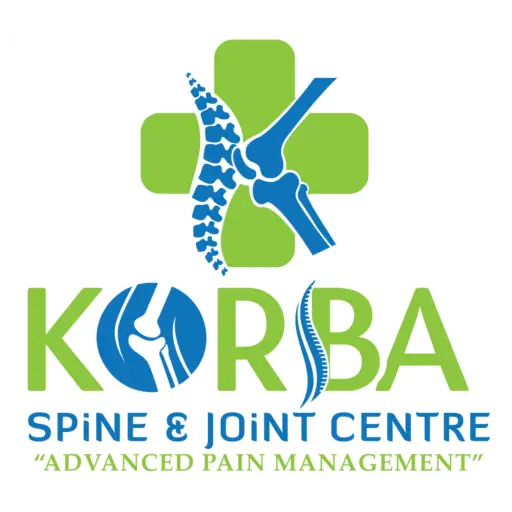Chronic low back pain (CLBP) is a condition that affects millions worldwide, disrupting daily activities and diminishing quality of life. If you’re reading this, you might be experiencing it or know someone who is. Let’s dive deep into what chronic low back pain is, why it occurs, who is most at risk, and how physiotherapy can be a game-changer in treating and preventing this condition.
What is Chronic Low Back Pain (CLBP)?
Chronic low back pain refers to discomfort in the lower back that persists for 12 weeks or longer. Unlike acute pain, which typically resolves with treatment or rest, chronic pain lingers and may require comprehensive management.
Key Characteristics:
- Pain lasting more than 3 months.
- Can be constant or intermittent.
- Often accompanied by stiffness, reduced mobility, or discomfort during activities.
How Does Chronic Low Back Pain Happen?
Chronic low back pain often begins with an initial injury or strain that doesn’t heal correctly. Over time, improper healing, repetitive stress, or even lifestyle choices can exacerbate the issue, making the pain chronic.
When and Why Does Chronic Low Back Pain Occur?
- When:
- After an injury or accident.
- Following prolonged physical inactivity or repetitive strain.
- With age-related changes in the spine.
- Why:
- Poor posture or ergonomics.
- Weak core muscles.
- Prolonged sitting or standing in awkward positions.
- Degenerative diseases like arthritis or disc degeneration.
Who is More Prone to Chronic Low Back Pain?
Certain groups are at a higher risk of developing CLBP:
- Age: Individuals aged 30-60 due to degenerative changes.
- Occupation: Jobs involving heavy lifting, prolonged sitting, or repetitive movements.
- Lifestyle: Sedentary lifestyles or lack of exercise.
- Health Conditions: Obesity, arthritis, or previous spine injuries.
Symptoms of Chronic Low Back Pain
Common symptoms include:
- Persistent dull or sharp pain in the lower back.
- Stiffness, especially in the morning.
- Pain radiating to the legs or buttocks (sciatica).
- Difficulty standing, walking, or bending for long periods.
Causes of Chronic Low Back Pain
- Mechanical Causes:
- Disc herniation.
- Facet joint arthritis.
- Muscle strain or ligament sprain.
- Structural Issues:
- Scoliosis or spinal deformities.
- Spondylolisthesis.
- Systemic Causes (Differential Diagnosis):
- Kidney stones.
- Endometriosis or other pelvic conditions.
- Spinal infections.
How to Differentiate CLBP from Systemic Pain (e.g., Kidney Stones)
| Feature | Chronic Low Back Pain | Kidney Stones/Systemic Pain |
|---|---|---|
| Location | Lower back, may radiate to legs. | Flank pain, may radiate to groin. |
| Trigger | Movement, posture. | No relation to posture; sudden onset. |
| Associated Symptoms | Stiffness, weakness. | Nausea, fever, blood in urine (for stones). |
If symptoms are unclear, consult a healthcare provider for proper diagnosis.
Treatment Options for Chronic Low Back Pain
1. Emphasis on Physiotherapy
Physiotherapy is a cornerstone in managing and treating chronic low back pain. Unlike medications, which only mask the pain temporarily, physiotherapy addresses the root cause, promoting long-term relief and prevention.
Why Physiotherapy?
- Pain Relief: Techniques like manual therapy, TENS, and heat therapy.
- Strengthening: Exercises targeting the core and back muscles.
- Posture Correction: Ergonomic training for better alignment.
- Prevention: Education on movement and posture to prevent recurrence.
Benefits of Physiotherapy Over Medications:
- Addresses underlying causes.
- Improves mobility and strength.
- Reduces the risk of dependency on painkillers.
2. Other Treatments
- Medications: Pain relievers, muscle relaxants (temporary relief).
- Lifestyle Changes: Regular exercise, weight management.
- Surgery: In severe cases (e.g., herniated disc).
- Home Remedies: Hot/cold packs, gentle stretching.
Precautions to Avoid Chronic Low Back Pain
- Maintain good posture.
- Avoid prolonged sitting or standing.
- Engage in regular low-impact exercises like swimming or walking.
- Use ergonomic furniture.
Common Myths About Low Back Pain
- Myth: Rest is the best cure.
Fact: Prolonged rest can worsen stiffness and delay recovery. - Myth: Painkillers cure back pain.
Fact: Medications only provide temporary relief. - Myth: Surgery is always necessary.
Fact: Most cases can be managed without surgery.
Home Remedies for Managing CLBP
- Apply hot or cold packs.
- Gentle yoga or stretching exercises.
- Use lumbar support while sitting.
- Stay hydrated to maintain spinal health.
Why Visit a Physiotherapist for Chronic Low Back Pain?
Visiting a physiotherapist ensures:
- A personalized treatment plan.
- Proper evaluation and diagnosis.
- Techniques to restore normal function.
Conclusion
Chronic low back pain can be debilitating, but with the right approach, relief is possible. Physiotherapy plays a crucial role in not just treating but also preventing the recurrence of pain. Don’t rely solely on medications—address the root cause with physiotherapy for a healthier, pain-free life.
For more information, visit our Servichttps://korbaspineclinic.com/contact-2-2-2-2/es Page.
Stay connected with us on Facebook and YouTube.
Note: Chronic low back pain should always be evaluated by a qualified healthcare professional. Self-treatment is not a substitute for professional advice
